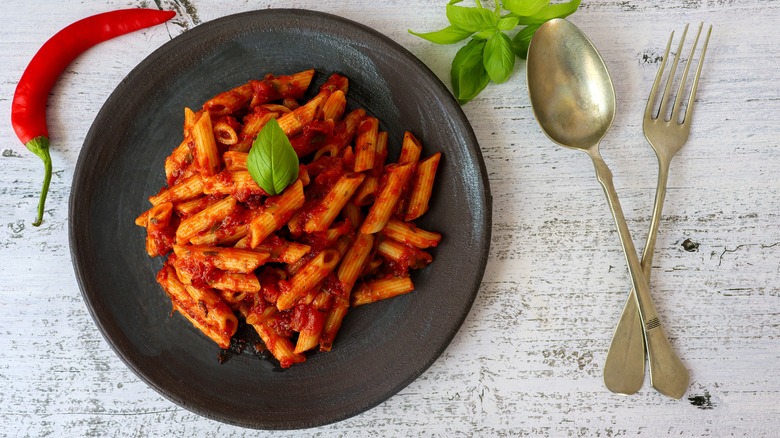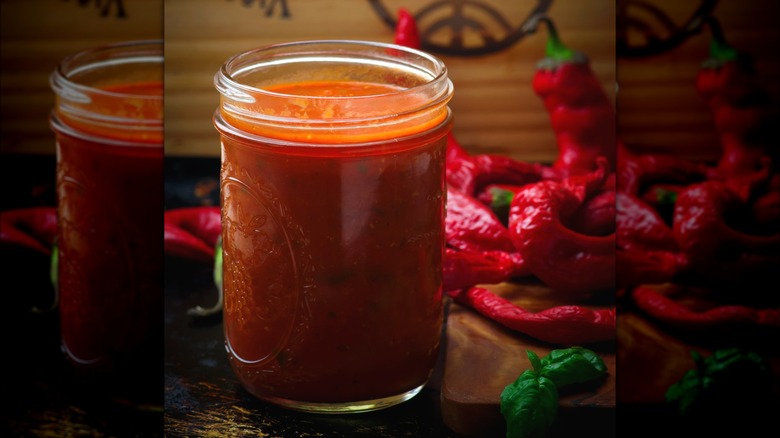What Gives Arrabbiata Sauce Its Iconic Spice?
You definitely don't have to be Italian to appreciate arrabbiata sauce: a spicy, tomato-based pasta sauce with origins in Rome. While you can't go wrong with a classic marinara for spaghetti or lasagna, swapping it out for arrabbiata sauce can give your dishes a much-needed kick. Since Italian food isn't necessarily known for being spicy, you may be wondering where the heat in arrabbiata comes from. The answer is straightforward: red chili flakes.
The word arrabbiata (or arrabbiato) means "angry" in Italian, which makes it no surprise that it was used to name this spicy sauce. But while red chili flakes give it its characteristic kick, the rest its ingredients are essentially identical to a classic tomato sauce: oil, crushed tomatoes, onion, garlic, basil, salt, and pepper. In fact, many cooks who used heaps of oil, garlic, and red chili flakes were called arrabbiato, perhaps because they were taking out their anger on their pasta with spice.
How to use arrabbiata sauce in your meals
Traditionally, arrabbiata is paired with penne pasta for a bright, spicy meal — but don't stop there. For one, you can experiment with pasta shapes. Try long varieties like spaghetti or pappardelle, or spice up your baked pasta with a quintessential baked ziti arrabbiata. Layer lasagna sheets with the sauce and some cheese for a fiery take on the traditional dish. And let's not forget another big dog of the Italian culinary world: pizza. Instead of just sprinkling red chili flakes on top of your next Margherita pie, make an arrabbiata pizza by using it as your base sauce for guaranteed spice and flavor in every bite.
Essentially, anything that uses tomato sauce can be elevated with arrabbiata. Want a spicy meatball sub? Chicken parm tasting a bit disappointing and bland? Arrabbiata to the rescue. It can even be used as a marinade for chicken, steak, or burgers. While its name might mean "angry," you certainly won't be angry about using it.


